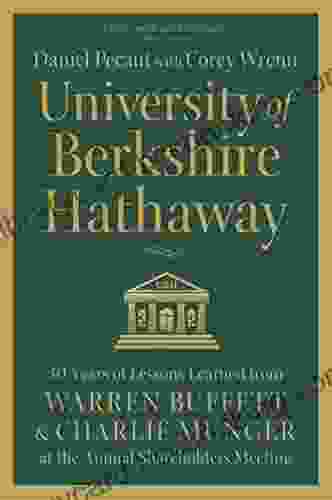Cinema Performance and the National Traditions in World Cinema

Cinema is a global art form that has the power to transcend national boundaries and cultures. However, it is also a medium that is deeply rooted in the national traditions of its creators. In this book, we explore the relationship between cinema performance and national traditions in world cinema. We examine how filmmakers from different cultures use performance to express their national identities and to engage with global audiences.
4.8 out of 5
| Language | : | English |
| File size | : | 3546 KB |
| Text-to-Speech | : | Enabled |
| Screen Reader | : | Supported |
| Enhanced typesetting | : | Enabled |
| Word Wise | : | Enabled |
| Print length | : | 284 pages |
The book features case studies of films from around the world, including China, India, Iran, Japan, and the United States. These case studies demonstrate the vielfältig range of ways in which cinema performance can be used to express national identity. For example, in the Chinese film "Farewell My Concubine," director Chen Kaige uses Peking opera performance to explore the themes of national identity and cultural conflict. In the Indian film "Lagaan," director Ashutosh Gowariker uses cricket to tell a story about national pride and resistance to British colonialism.
In addition to examining the role of performance in expressing national identity, the book also explores the ways in which cinema performance can be used to engage with global audiences. For example, in the Iranian film "The White Balloon," director Jafar Panahi uses a simple story about a young girl's quest to buy a goldfish to explore the complex social and political issues facing Iran in the wake of the Islamic Revolution. In the Japanese film "Departures," director Yojiro Takita uses the ritual of preparing the dead for burial to tell a story about the importance of human connection and the power of redemption.
These are just a few examples of the many ways in which cinema performance can be used to express national identity and to engage with global audiences. The book "Cinema Performance and the National Traditions in World Cinema" provides a comprehensive overview of this important topic, and it is a valuable resource for anyone interested in film studies, cultural studies, or global cinema.
Chapter 1: The Chinese Cinema Performance Tradition
The Chinese cinema performance tradition is one of the oldest and most vielfältig in the world. It dates back to the late 19th century, when Chinese filmmakers began to experiment with the new medium of film. Early Chinese films were heavily influenced by traditional Chinese theater, and many of the conventions of Chinese cinema performance can be traced back to this early period.
One of the most distinctive features of Chinese cinema performance is the use of stylised movement and gesture. This style of performance is often used to convey emotion and to create a sense of theatricality. Chinese actors are also known for their use of facial expressions, which can be very expressive and nuanced.
In addition to stylised movement and gesture, Chinese cinema performance is also characterised by its use of music and sound. Music plays an important role in Chinese films, and it is often used to create atmosphere and to convey emotion. Chinese films also make extensive use of sound effects, which can be used to create a sense of realism or to add to the film's atmosphere.
The Chinese cinema performance tradition is a rich and vielfältig one, and it has had a significant influence on world cinema. Chinese filmmakers have used performance to express their national identity and to engage with global audiences, and their films have been critically acclaimed for their artistry and their cultural insights.
Chapter 2: The Indian Cinema Performance Tradition
The Indian cinema performance tradition is another one of the oldest and most vielfältig in the world. It dates back to the early 20th century, when Indian filmmakers began to experiment with the new medium of film. Early Indian films were heavily influenced by traditional Indian theater, and many of the conventions of Indian cinema performance can be traced back to this early period.
One of the most distinctive features of Indian cinema performance is the use of song and dance. Song and dance are an integral part of Indian culture, and they play an important role in Indian films. Indian films often feature elaborate song and dance sequences, which can be used to advance the plot, to provide comic relief, or to simply entertain the audience.
In addition to song and dance, Indian cinema performance is also characterised by its use of melodrama. Melodrama is a style of performance that is characterised by its exaggerated emotions and its use of heightened language. Indian actors are known for their ability to convey strong emotions through their performances, and melodrama is a common feature of Indian films.
The Indian cinema performance tradition is a rich and vielfältig one, and it has had a significant influence on world cinema. Indian filmmakers have used performance to express their national identity and to engage with global audiences, and their films have been critically acclaimed for their artistry and their cultural insights.
Chapter 3: The Iranian Cinema Performance Tradition
The Iranian cinema performance tradition is a relatively new one, dating back to the mid-20th century. However, in a short period of time, Iranian filmmakers have made a significant contribution to world cinema. Iranian films are known for their realism, their social and political commentary, and their use of non-professional actors.
One of the most distinctive features of Iranian cinema performance is its use of non-professional actors. Iranian filmmakers often cast non-professional actors in their films, and this can give their films a sense of authenticity and realism. Non-professional actors are also more likely to be able to convey the emotions of their characters in a natural and believable way.
In addition to their use of non-professional actors, Iranian filmmakers are also known for their use of long takes. Long takes are shots that are held for an extended period of time, and they can be used to create a sense of intimacy and realism. Iranian filmmakers often use long takes to capture the everyday lives of their characters, and this can give their films a sense of documentary-like realism.
The Iranian cinema performance tradition is a rich and vielfältig one, and it has had a significant influence on world cinema. Iranian filmmakers have used performance to express their national identity and to engage with global audiences, and their films have been critically acclaimed for their artistry and their cultural insights.
Chapter 4: The Japanese Cinema Performance Tradition
The Japanese cinema performance tradition is one of the most unique and distinctive in the world. Japanese films are known for their use of stylised movement and gesture, their use of music and sound, and their use of allegory and symbolism. Japanese actors are known for their ability to convey emotion through their performances, and they often use subtle and nuanced gestures to create complex and believable characters.
One of the most distinctive features of Japanese cinema performance is the use of stylised movement and gesture. Japanese actors often use stylised movement and gesture to convey emotion and to create a sense of theatricality. This style of performance can be traced back to traditional Japanese theater, and it is one of the things that makes Japanese cinema so unique.
In addition to their use of stylised movement and gesture, Japanese films are also known for their use of music and sound. Music plays an important role in Japanese films, and it is often used to create atmosphere and to convey emotion. Japanese films also make extensive use of sound effects, which can be used to create a sense of realism or to add to the film's atmosphere.
Japanese cinema performance is also characterised by its use of allegory and symbolism. Japanese filmmakers often use allegory and symbolism to explore complex social and political issues. This can make Japanese films difficult to understand for Western audiences, but it can also add to their richness and depth.
The Japanese cinema performance tradition is a rich and vielfältig one, and it has had a significant influence on world cinema. Japanese filmmakers have used performance to express their national identity and to engage with global audiences, and their films have been critically acclaimed for their artistry and their cultural insights.
Chapter 5: The American Cinema Performance Tradition
The American cinema performance tradition is one of the most influential in the world. American films are known for their use of realism, their use of star power, and their use of special effects. American actors are known for their ability to convey emotion through their performances, and they often use a naturalistic style of acting.
One of the most distinctive features of American cinema performance is the use of realism. American filmmakers often strive to create films that are realistic and believable. This can be seen in the way that they use actors, sets, and costumes. American films also often deal with real-world issues, and they can be very effective at exploring complex social and political issues.
In addition to their use of realism, American films are also known for their use of star power. Star power is the ability of a film to attract an audience based on the popularity of its stars. American films often feature big-name stars, and this can help to guarantee their success at the box office.
American films also make extensive use of special effects. Special effects can be used to create a sense of realism, to add to the film's atmosphere, or to simply entertain the audience. American filmmakers are known for their innovative use of special effects, and they have helped to push the boundaries of what is possible in cinema.
The American cinema performance tradition is a rich and vielfältig one, and it
4.8 out of 5
| Language | : | English |
| File size | : | 3546 KB |
| Text-to-Speech | : | Enabled |
| Screen Reader | : | Supported |
| Enhanced typesetting | : | Enabled |
| Word Wise | : | Enabled |
| Print length | : | 284 pages |
Do you want to contribute by writing guest posts on this blog?
Please contact us and send us a resume of previous articles that you have written.
 Book
Book Novel
Novel Page
Page Chapter
Chapter Text
Text Story
Story Genre
Genre Reader
Reader Library
Library Paperback
Paperback E-book
E-book Magazine
Magazine Newspaper
Newspaper Paragraph
Paragraph Sentence
Sentence Bookmark
Bookmark Shelf
Shelf Glossary
Glossary Bibliography
Bibliography Foreword
Foreword Preface
Preface Synopsis
Synopsis Annotation
Annotation Footnote
Footnote Manuscript
Manuscript Scroll
Scroll Codex
Codex Tome
Tome Bestseller
Bestseller Classics
Classics Library card
Library card Narrative
Narrative Biography
Biography Autobiography
Autobiography Memoir
Memoir Reference
Reference Encyclopedia
Encyclopedia Claire Noble
Claire Noble Daniel Paolicchi
Daniel Paolicchi Connie Schultz
Connie Schultz Daniel Connolly
Daniel Connolly Connie Benjamin
Connie Benjamin Craig Ramsay
Craig Ramsay Dan Saunders
Dan Saunders Craig Payne
Craig Payne Cynthia Gabriel
Cynthia Gabriel Daniel J Siegel
Daniel J Siegel Cora Kenborn
Cora Kenborn D S Allan
D S Allan Colin Broderick
Colin Broderick Dan Grunfeld
Dan Grunfeld Craig M Kershaw
Craig M Kershaw Dan Jenkins
Dan Jenkins Daniel Lacalle
Daniel Lacalle Dalili
Dalili Dale P Clemens
Dale P Clemens Cynthia Reyes
Cynthia Reyes
Light bulbAdvertise smarter! Our strategic ad space ensures maximum exposure. Reserve your spot today!
 Julio CortázarFollow ·14.5k
Julio CortázarFollow ·14.5k Todd TurnerFollow ·8.4k
Todd TurnerFollow ·8.4k Michael CrichtonFollow ·12k
Michael CrichtonFollow ·12k Jacob FosterFollow ·13.8k
Jacob FosterFollow ·13.8k Mark MitchellFollow ·6.3k
Mark MitchellFollow ·6.3k Christopher WoodsFollow ·19.9k
Christopher WoodsFollow ·19.9k Clark CampbellFollow ·6.8k
Clark CampbellFollow ·6.8k Darnell MitchellFollow ·2.4k
Darnell MitchellFollow ·2.4k

 Donald Ward
Donald WardVeteran Investment Advisor Reflects On Money
Unlocking Financial Wisdom...

 Fernando Pessoa
Fernando PessoaUnlock the Secrets of Value Investing with "University of...
In the realm of investing, there stands an...

 Jorge Luis Borges
Jorge Luis BorgesMaster Spanish Vocabulary with Ap Spanish Flashcards...
Are you eager to expand your Spanish...

 Roger Turner
Roger TurnerPlay Like a Pro: The Ultimate Guide to Becoming a Master...
Are you ready to...
4.8 out of 5
| Language | : | English |
| File size | : | 3546 KB |
| Text-to-Speech | : | Enabled |
| Screen Reader | : | Supported |
| Enhanced typesetting | : | Enabled |
| Word Wise | : | Enabled |
| Print length | : | 284 pages |
















